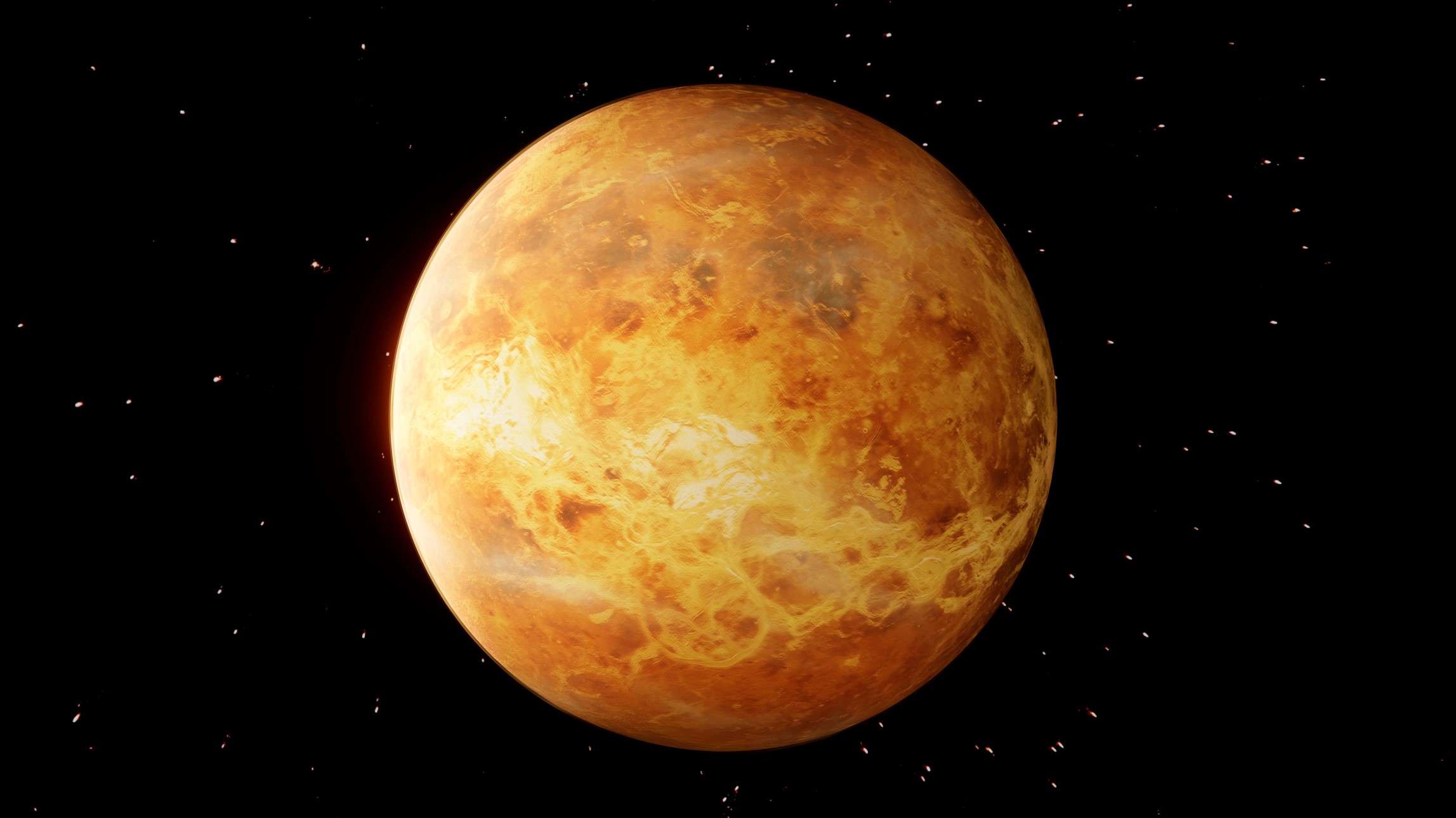Venus is the second planet from the sun, located between Mercury and Earth. It is named after the Roman goddess of love and beauty, and it has been an object of fascination for astronomers and space enthusiasts alike. Venus is known for its thick atmosphere, which is primarily composed of carbon dioxide, and its surface temperature, which is hot enough to melt lead. In this article, we will explore the mysteries and enigmas of Venus and try to unravel some of its secrets.
 |
| Venus: The Mysterious and Enigmatic Planet |
Physical Characteristics of Venus
Venus is similar in size to Earth, with a diameter of 12,104 km, only slightly smaller than Earth's 12,742 km diameter. Its surface is rocky and has a molten core, similar to Earth, but its atmosphere is significantly different. Venus's atmosphere is thick and toxic, with clouds of sulfuric acid and pressure 90 times greater than that of Earth. These conditions make it challenging for spacecraft to land on the planet's surface, and only a handful of missions have been successful.
Venus's surface is covered in craters, mountains, and volcanic plains. It has a flat, featureless landscape, with no oceans or seas, and its surface is relatively young, with an estimated age of 300 to 600 million years. Unlike Earth, Venus does not have a magnetic field, which makes it more vulnerable to the solar wind.
The Greenhouse Effect on Venus
Venus's thick atmosphere traps heat, creating a runaway greenhouse effect that makes it the hottest planet in the solar system. The average surface temperature on Venus is 462°C, which is hot enough to melt lead. The planet's atmosphere is primarily composed of carbon dioxide, which traps heat and prevents it from escaping into space. The greenhouse effect on Venus is a warning sign of what could happen to Earth if we don't take steps to reduce carbon emissions.
Scientists believe that the greenhouse effect on Venus was caused by a combination of factors, including volcanic activity and the release of gases from the planet's surface. The thick atmosphere and intense greenhouse effect have made it challenging to study Venus's surface and atmosphere, but recent advances in technology have provided new insights into the planet's mysteries.
The History of Venus Exploration
Venus has been a subject of fascination for astronomers and space enthusiasts for centuries. The ancient Greeks observed Venus and named it after the goddess of love and beauty. In the 20th century, several missions were sent to Venus to explore its surface and atmosphere. The first successful mission was NASA's Mariner 2, which flew by Venus in 1962 and gathered data on its atmosphere. Since then, several other missions, including the Soviet Union's Venera program and NASA's Magellan mission, have provided valuable insights into Venus's physical characteristics.
The Venera program was the most successful mission to Venus, with 16 successful landings on the planet's surface between 1970 and 1983. The Venera missions provided the first close-up images of Venus's surface and revealed the harsh conditions that make it difficult for spacecraft to survive. The Magellan mission, launched in 1989, used radar to map Venus's surface in detail, providing new insights into its geology and topography.
The Search for Life on Venus
Despite its harsh conditions, some scientists believe that Venus could have once been a habitable planet. In September 2020, a team of scientists announced that they had detected the presence of phosphine gas in Venus's atmosphere, which could be a potential sign of life. Phosphine is a gas that is typically produced by living organisms, but it can also be produced by non-biological processes.
The discovery of phosphine on Venus has generated a lot of excitement and debate in the scientific community. Some scientists believe that the phosphine could be a sign of life, while others argue that it could be the result of a previously unknown chemical process in the planet's atmosphere.
Further research and exploration will be needed to determine the source of the phosphine and whether or not it is a sign of life on Venus. Several new missions are currently being planned to study Venus in more detail, including NASA's VERITAS and DAVINCI+ missions, which are set to launch in the 2020s.
The Future of Venus Exploration
Venus has long been overshadowed by its neighbor, Mars, in terms of space exploration. However, recent discoveries and advances in technology have renewed interest in studying Venus and unlocking its mysteries.
Several new missions are currently being planned to study Venus in more detail. NASA's VERITAS mission, set to launch in 2026, will use radar to map Venus's surface in unprecedented detail, providing new insights into its geology and topography. The DAVINCI+ mission, also set to launch in 2026, will send a probe to Venus's atmosphere to study its composition and dynamics.
Other proposed missions include the Venus In Situ Explorer, which would send a lander to study Venus's surface and atmosphere, and the Venus Flagship, which would be a larger mission to study the planet's geology, climate, and potential for life.
Conclusion:
Venus is a mysterious and enigmatic planet that has captured the imagination of astronomers and space enthusiasts for centuries. Its thick atmosphere, intense greenhouse effect, and harsh conditions make it a challenging place to explore, but recent discoveries and advances in technology have provided new insights into its mysteries. With several new missions planned in the coming years, we can expect to learn even more about this fascinating planet and its potential for life.


0 Comments